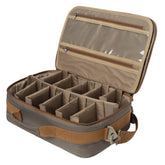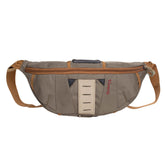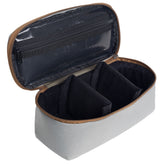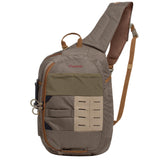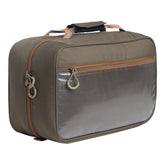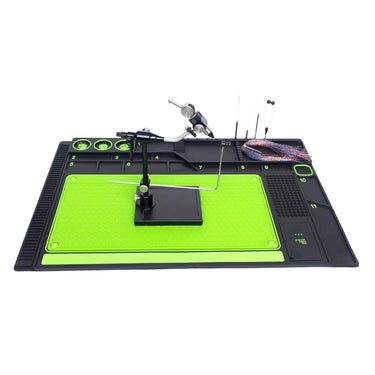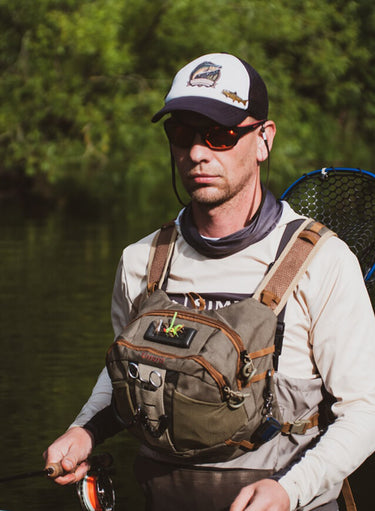Flies: The Ultimate Guide to Beadhead, Dry Dropper, Weighted, and Soft Hackle Nymphs
When I head to the water, my fly box is a carefully curated selection of patterns that cater to the aquatic life below the surface. The right flies—including beadhead nymphs, dry dropper nymphs, weighted nymphs, and soft hackle nymphs—can significantly increase my chances of landing a catch. Understanding the nuances of each type makes all the difference in enticing fish and enhancing my overall fly fishing experience.

Beadhead nymphs are essential for targeting fish in deeper water, while dry dropper nymphs allow me to present two flies at once, maximizing visibility and appeal. Weighted nymphs sink quickly, making them perfect for fast currents, whereas soft hackle nymphs provide a lifelike movement that often attracts hesitant fish. Each has its role in my fishing strategy and knowing when to use them is key.
As I explore various waters, observing patterns in wildlife behavior helps refine my choices. The right nymphs can mimic the natural food sources that fish are actively feeding on, leading to more successful outings. With the right knowledge and preparation, I can elevate my fly fishing skills and enjoy the thrill of the catch even more.
Basics of Nymphing Techniques
Nymphing is a crucial technique in fly fishing, and it involves presenting nymph patterns effectively to entice fish. Understanding the fundamentals of different nymphing styles and the use of specific fly patterns enhances the chances of catching fish.
Fundamentals of Czech Nymphing
Czech nymphing is characterized by a short line technique that presents nymphs just below the surface. This method allows me to maintain excellent control over my nymphs and detect subtle strikes.
The key elements include:
- Short Leader: A leader length of around 7 to 10 feet.
- Weighted Nymphs: Utilizing tungsten beadheads ensures my flies sink quickly.
- Direct Contact: Keeping the line taut helps me feel any bites instantly.
Using this technique effectively helps me fish in fast currents where fish often hold.
Understanding Emergers in Fly Fishing
Emerger patterns play a vital role when fish are feeding just below the surface. These flies imitate nymphs transitioning to adulthood, making them irresistible to feeding fish.
Key aspects include:
- Presentation: I often use a dry-dropper rig to present an emerger above a nymph.
- Pattern Selection: Common choices are CDC flashback pheasant tails and other simple or complex flies that mimic insects like mayflies and midges.
Understanding the life cycle of insects aids in selecting the right patterns and presentation style for effective fishing.
Essential Nymph Patterns for Fly Boxes
Every angler should have a variety of essential nymph patterns in their fly box. These patterns can vary in size and weight and should be tailored to match local hatches.
Some indispensable options include:
- Pheasant Tail Nymph: A versatile pattern that imitates many aquatic insects.
- Mayfly Nymphs: Essential during mayfly hatches to match the prevalent food source.
- Beadhead Nymphs: Especially effective in fast water due to their sinking ability.
Having a well-rounded selection of nymphs, including various weights and styles, increases my chances of success on the water.
Types of Nymphs and Best Practices
I find it essential to understand the various types of nymphs to improve catch rates and refine my fishing techniques. Each nymph type offers unique advantages, which I leverage based on water conditions, fish behavior, and my fishing goals.
Selecting Beadhead Nymphs
When I choose beadhead nymphs, I focus on their weight and design. The tungsten bead adds significant mass, allowing the nymph to sink quickly. This feature is particularly useful in fast-moving water where fish often seek food at deeper levels.
I prefer jig hooks for beadhead nymphs. They create a natural presentation and reduce snags. Selecting sizes between 10 and 16 is ideal, as these can represent a variety of prey. Colors like dark olive or black tend to be effective in murky waters, while brightly colored options work well in clear streams. I also pay attention to flash materials that can entice fish in low-light conditions.
Top Picks for Dry Dropper Nymphs
In my experience with dry dropper setups, I typically select nymphs that maintain a delicate profile. My top picks include lightweight patterns with natural colors like tan, brown, or gray. These tones blend seamlessly into aquatic surroundings, making them less suspicious to trout.
For my dry fly, I often choose a high-floating pattern that helps support the nymph beneath. Ideally, I look for combinations where the dry fly mimics an emerging insect while the nymph represents an aquatic larva. This dual approach increases my chances of catching fish, especially during active hatches. I’ve found that short leader setups improve my strike detection, helping me capitalize on bites.
Adapting Soft Hackle Nymphs in Your Technique
Soft hackle nymphs have become one of my favorite choices due to their versatility. Their feathered bodies create subtle movements that attract fish. I integrate soft hackles by using a slow retrieve or dead-drifting them close to the bottom.
By varying my retrieve speed, I can replicate the natural movements of aquatic insects. During low-light conditions, a soft hackle with body flash elements can be particularly alluring. I often use them in conjunction with weighted nymphs to get them to the proper depth. This strategy helps me target more fish during challenging conditions.
Advanced Nymph Fishing Strategies
In my experience, mastering advanced nymph fishing techniques is crucial for consistent success. This involves understanding how to rig flies effectively, fine-tuning weighted nymphs, and targeting specific fish species with appropriate patterns.
Mastering Subsurface Fly Rigs
Creating effective subsurface fly rigs is essential for angling success. I often opt for a double nymph rig, which involves tying two nymphs to the same line. This approach increases my chances of catching fish by presenting multiple options at once.
When using this method, I typically position a heavier nymph like a Copper John at the bottom, allowing it to sink quickly, while a lighter pattern rests higher in the water column. Additionally, ensuring proper leader length—usually between 9 to 12 feet—helps maintain stealth as I fish in varying depths.
Fine-Tuning Weighted Nymphs for Success
To maximize the effectiveness of weighted nymphs, calibration is key. I adjust the weight by incorporating additional materials such as lead wraps or using patterns with built-in weights, creating a more streamlined presentation.
Weight distribution plays a significant role in how these nymphs perform in the water. Ensuring the nymphs sink naturally often requires experimentation with shot placement. I frequently choose sizes ranging from 2 to 4, based on conditions like water speed and depth.
Targeting Species with Specific Nymphs
Targeting species such as rainbows and browns requires an understanding of their feeding habits. I find that matching the hatch is particularly effective, especially when imitating insects like drakes or midges.
Specific nymph patterns, like hot spot variants, can draw the attention of fish when presented correctly. I study the local ecosystem to select the best flies and adjust my approach according to the time of year. This adaptation can significantly increase my catch rates, especially in prime fishing locations.



